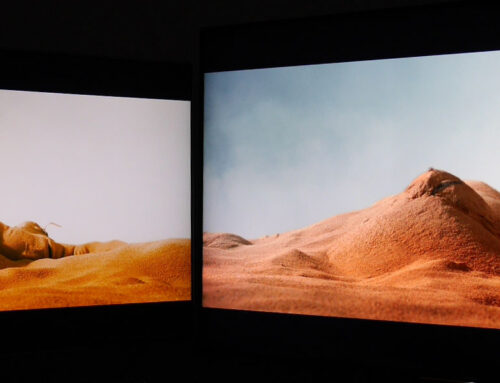By Joel Silver
No, you can’t get the TV you want
You can’t always get the TV you want
But if you try sometime you find,
You can get the TV you need
OK – Forgive the play on the Rolling Stones – but High Dynamic Range and Wide Color Gamut are finally here. So what TV should I buy now?
That question was an easy one in the old days – like last year!
The TV you wanted last year was simply one that performed just like the Studio Monitor that was used to create content you watch. In tech terms, that was one that could be calibrated to closely match REC 709 color standards and BT.1886 EOTF. For the last five or six years that was not only possible, but downright affordable.
Those days are over. You cannot buy a consumer TV that will even come close to matching the light output capability of the professional monitors used for High Dynamic Range.
Power? Not nearly enough…..
In Pre-HDR days, and by design, professional monitors had the light output capability of the old CRTs. That was about 100 Nits (a short term for the Luminance specification Candelas Per Meter Squared). Consumer TVs easily met and exceeded that performance spec, and we could get great images even in bright normally lit rooms.
In this HDR era, light output for HDR professional monitors ranges from a current 4000 Nits to a proposed 10,000 Nits.
You cannot buy anywhere near that kind of power for your home. This year’s consumer HDR TVs will range from 400 to hopefully 1000 Nits. So you absolutely must buy the most powerful TV so you can get even remotely close to content creation’s pictures. HDR sources will “Map the Color Volume” of HDR content down to the limited capability of your TV, so buying TVs with more power will get you better HDR pictures!
Historically, specifications for TV light output have been far from accurate. We strongly suggest you measure light output power yourself, or at the very least find a review where measurements from credible reviewers are clearly documented so you will have a clue what you are actually buying.
Finesse? Not anywhere near enough…..
The terms “Local Area Dimming” and “Full Array LEDs” have been part of TV marketing for years now. With HDR, we can add “Local Area Blasting” since HDR will dim select areas and also blast more light and more colors in other select areas of your screen – all according to digital instructions coming along with HDR programs called “Metadata”. Consider this simply the video equivalent of how content creation already controls multiple channels of surround sound. With HDR, content creation will now control color and light in select pixels on your screen.
How “select” will the areas of your screen be? An older 2013 HDR Studio monitor already had over 1800 distinct areas of RGB that were individually controlled to go bright or dark. Don’t expect your LED TVs to have anywhere near that amount of “Finesse”. We are currently seeing a tenth of that considered OK for consumer LED, and a sixth of that considered very good. For OLED 4K TVs, there are potentially 8,000,000 select areas, but do not expect consumer content Metadata streams to have that level of Finesse in control. Self illuminating screens like OLED will have superb Finesse – as well as amazing blacks, but will not match the power of the brightest LEDs.
OLEDs easily outperform LEDs when it comes to their finesse in black levels. LEDs easily outperform OLEDs in sheer light output. For HDR you want both, but you will have to choose for quite a while. Your choices should be based on how well you can control ambient light in your room. Brightly lit rooms may require the light output of the best LEDs, and bright light will ruin the look of your blacks with reflections. Reasonably well light controlled rooms will enable OLED’s blacks and reasonable power levels to display superb dynamic range.
So – What TV Do I buy?
The answer is only a little different than past year’s advice. In years past, we aimed to get as close as possible to the monitors used for content creation. Over the years in Pre-HDR days, we actually got there and succeeded! Right now you can merely approach professional monitor performance from afar. You will need to look for the best of both Power and Finesse for HDR viewing. For now, the very best of the HDR TV offerings will be your only logical choices for superior HDR viewing. With whatever brand and technology you end up buying – buy their top of their line model!
Dolby Vision:
http://www.dolby.com/us/en/technologies/dolby-vision/dolby-vision-white-paper.pdf
SMPTE HDR
https://www.smpte.org/sites/default/files/Study%20Group%20On%20High-Dynamic-Range-HDR-Ecosystem.pdf





